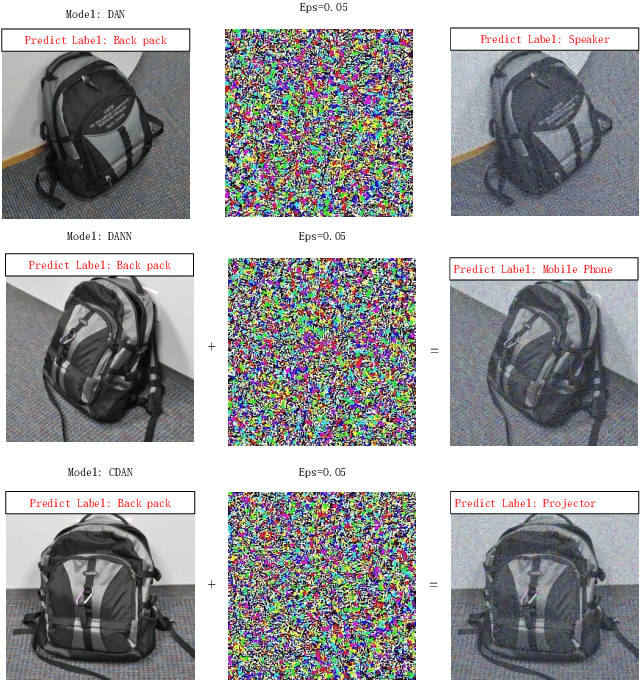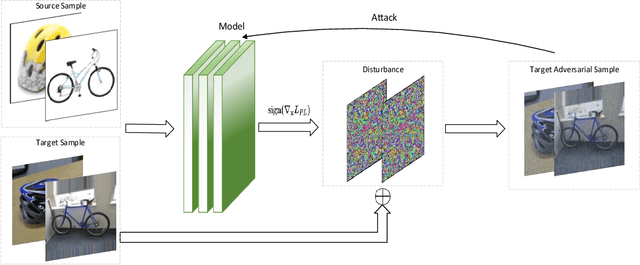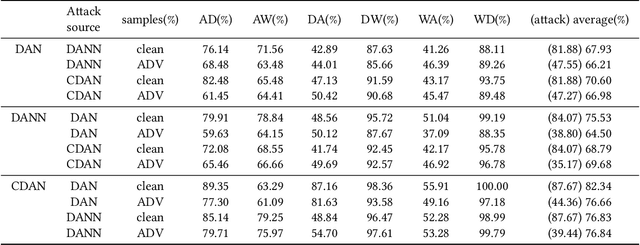Liyuan Zhang
Linda
T$^\text{3}$SVFND: Towards an Evolving Fake News Detector for Emergencies with Test-time Training on Short Video Platforms
Jul 27, 2025Abstract:The existing methods for fake news videos detection may not be generalized, because there is a distribution shift between short video news of different events, and the performance of such techniques greatly drops if news records are coming from emergencies. We propose a new fake news videos detection framework (T$^3$SVFND) using Test-Time Training (TTT) to alleviate this limitation, enhancing the robustness of fake news videos detection. Specifically, we design a self-supervised auxiliary task based on Mask Language Modeling (MLM) that masks a certain percentage of words in text and predicts these masked words by combining contextual information from different modalities (audio and video). In the test-time training phase, the model adapts to the distribution of test data through auxiliary tasks. Extensive experiments on the public benchmark demonstrate the effectiveness of the proposed model, especially for the detection of emergency news.
Geometry-Aware 3D Salient Object Detection Network
Feb 23, 2025



Abstract:Point cloud salient object detection has attracted the attention of researchers in recent years. Since existing works do not fully utilize the geometry context of 3D objects, blurry boundaries are generated when segmenting objects with complex backgrounds. In this paper, we propose a geometry-aware 3D salient object detection network that explicitly clusters points into superpoints to enhance the geometric boundaries of objects, thereby segmenting complete objects with clear boundaries. Specifically, we first propose a simple yet effective superpoint partition module to cluster points into superpoints. In order to improve the quality of superpoints, we present a point cloud class-agnostic loss to learn discriminative point features for clustering superpoints from the object. After obtaining superpoints, we then propose a geometry enhancement module that utilizes superpoint-point attention to aggregate geometric information into point features for predicting the salient map of the object with clear boundaries. Extensive experiments show that our method achieves new state-of-the-art performance on the PCSOD dataset.
Gradient Based Method for the Fusion of Lattice Quantizers
Feb 09, 2025
Abstract:In practical applications, lattice quantizers leverage discrete lattice points to approximate arbitrary points in the lattice. An effective lattice quantizer significantly enhances both the accuracy and efficiency of these approximations. In the context of high-dimensional lattice quantization, previous work proposed utilizing low-dimensional optimal lattice quantizers and addressed the challenge of determining the optimal length ratio in orthogonal splicing. Notably, it was demonstrated that fixed length ratios and orthogonality yield suboptimal results when combining low-dimensional lattices. Building on this foundation, another approach employed gradient descent to identify optimal lattices, which inspired us to explore the use of neural networks to discover matrices that outperform those obtained from orthogonal splicing methods. We propose two novel approaches to tackle this problem: the Household Algorithm and the Matrix Exp Algorithm. Our results indicate that both the Household Algorithm and the Matrix Exp Algorithm achieve improvements in lattice quantizers across dimensions 13, 15, 17 to 19, 21, and 22. Moreover, the Matrix Exp Algorithm demonstrates superior efficacy in high-dimensional settings.
Generative Psycho-Lexical Approach for Constructing Value Systems in Large Language Models
Feb 04, 2025



Abstract:Values are core drivers of individual and collective perception, cognition, and behavior. Value systems, such as Schwartz's Theory of Basic Human Values, delineate the hierarchy and interplay among these values, enabling cross-disciplinary investigations into decision-making and societal dynamics. Recently, the rise of Large Language Models (LLMs) has raised concerns regarding their elusive intrinsic values. Despite growing efforts in evaluating, understanding, and aligning LLM values, a psychologically grounded LLM value system remains underexplored. This study addresses the gap by introducing the Generative Psycho-Lexical Approach (GPLA), a scalable, adaptable, and theoretically informed method for constructing value systems. Leveraging GPLA, we propose a psychologically grounded five-factor value system tailored for LLMs. For systematic validation, we present three benchmarking tasks that integrate psychological principles with cutting-edge AI priorities. Our results reveal that the proposed value system meets standard psychological criteria, better captures LLM values, improves LLM safety prediction, and enhances LLM alignment, when compared to the canonical Schwartz's values.
Noise-Resilient Point-wise Anomaly Detection in Time Series Using Weak Segment Labels
Jan 21, 2025



Abstract:Detecting anomalies in temporal data has gained significant attention across various real-world applications, aiming to identify unusual events and mitigate potential hazards. In practice, situations often involve a mix of segment-level labels (detected abnormal events with segments of time points) and unlabeled data (undetected events), while the ideal algorithmic outcome should be point-level predictions. Therefore, the huge label information gap between training data and targets makes the task challenging. In this study, we formulate the above imperfect information as noisy labels and propose NRdetector, a noise-resilient framework that incorporates confidence-based sample selection, robust segment-level learning, and data-centric point-level detection for multivariate time series anomaly detection. Particularly, to bridge the information gap between noisy segment-level labels and missing point-level labels, we develop a novel loss function that can effectively mitigate the label noise and consider the temporal features. It encourages the smoothness of consecutive points and the separability of points from segments with different labels. Extensive experiments on real-world multivariate time series datasets with 11 different evaluation metrics demonstrate that NRdetector consistently achieves robust results across multiple real-world datasets, outperforming various baselines adapted to operate in our setting.
SmartAgent: Chain-of-User-Thought for Embodied Personalized Agent in Cyber World
Dec 10, 2024



Abstract:Recent advances in embodied agents with multimodal perception and reasoning capabilities based on large vision-language models (LVLMs), excel in autonomously interacting either real or cyber worlds, helping people make intelligent decisions in complex environments. However, the current works are normally optimized by golden action trajectories or ideal task-oriented solutions toward a definitive goal. This paradigm considers limited user-oriented factors, which could be the reason for their performance reduction in a wide range of personal assistant applications. To address this, we propose Chain-of-User-Thought (COUT), a novel embodied reasoning paradigm that takes a chain of thought from basic action thinking to explicit and implicit personalized preference thought to incorporate personalized factors into autonomous agent learning. To target COUT, we introduce SmartAgent, an agent framework perceiving cyber environments and reasoning personalized requirements as 1) interacting with GUI to access an item pool, 2) generating users' explicit requirements implied by previous actions, and 3) recommending items to fulfill users' implicit requirements. To demonstrate SmartAgent's capabilities, we also create a brand-new dataset SmartSpot that offers a full-stage personalized action-involved environment. To our best knowledge, our work is the first to formulate the COUT process, serving as a preliminary attempt towards embodied personalized agent learning. Our extensive experiments on SmartSpot illuminate SmartAgent's functionality among a series of embodied and personalized sub-tasks. We will release code and data upon paper notification at \url{https://github.com/tsinghua-fib-lab/SmartAgent}.
3D Focusing-and-Matching Network for Multi-Instance Point Cloud Registration
Nov 12, 2024



Abstract:Multi-instance point cloud registration aims to estimate the pose of all instances of a model point cloud in the whole scene. Existing methods all adopt the strategy of first obtaining the global correspondence and then clustering to obtain the pose of each instance. However, due to the cluttered and occluded objects in the scene, it is difficult to obtain an accurate correspondence between the model point cloud and all instances in the scene. To this end, we propose a simple yet powerful 3D focusing-and-matching network for multi-instance point cloud registration by learning the multiple pair-wise point cloud registration. Specifically, we first present a 3D multi-object focusing module to locate the center of each object and generate object proposals. By using self-attention and cross-attention to associate the model point cloud with structurally similar objects, we can locate potential matching instances by regressing object centers. Then, we propose a 3D dual masking instance matching module to estimate the pose between the model point cloud and each object proposal. It performs instance mask and overlap mask masks to accurately predict the pair-wise correspondence. Extensive experiments on two public benchmarks, Scan2CAD and ROBI, show that our method achieves a new state-of-the-art performance on the multi-instance point cloud registration task. Code is available at https://github.com/zlynpu/3DFMNet.
Learning with Dynamics: Autonomous Regulation of UAV Based Communication Networks with Dynamic UAV Crew
Sep 25, 2024Abstract:Unmanned Aerial Vehicle (UAV) based communication networks (UCNs) are a key component in future mobile networking. To handle the dynamic environments in UCNs, reinforcement learning (RL) has been a promising solution attributed to its strong capability of adaptive decision-making free of the environment models. However, most existing RL-based research focus on control strategy design assuming a fixed set of UAVs. Few works have investigated how UCNs should be adaptively regulated when the serving UAVs change dynamically. This article discusses RL-based strategy design for adaptive UCN regulation given a dynamic UAV set, addressing both reactive strategies in general UCNs and proactive strategies in solar-powered UCNs. An overview of the UCN and the RL framework is first provided. Potential research directions with key challenges and possible solutions are then elaborated. Some of our recent works are presented as case studies to inspire innovative ways to handle dynamic UAV crew with different RL algorithms.
On the Robustness of Domain Adaption to Adversarial Attacks
Aug 04, 2021



Abstract:State-of-the-art deep neural networks (DNNs) have been proved to have excellent performance on unsupervised domain adaption (UDA). However, recent work shows that DNNs perform poorly when being attacked by adversarial samples, where these attacks are implemented by simply adding small disturbances to the original images. Although plenty of work has focused on this, as far as we know, there is no systematic research on the robustness of unsupervised domain adaption model. Hence, we discuss the robustness of unsupervised domain adaption against adversarial attacking for the first time. We benchmark various settings of adversarial attack and defense in domain adaption, and propose a cross domain attack method based on pseudo label. Most importantly, we analyze the impact of different datasets, models, attack methods and defense methods. Directly, our work proves the limited robustness of unsupervised domain adaptation model, and we hope our work may facilitate the community to pay more attention to improve the robustness of the model against attacking.
 Add to Chrome
Add to Chrome Add to Firefox
Add to Firefox Add to Edge
Add to Edge